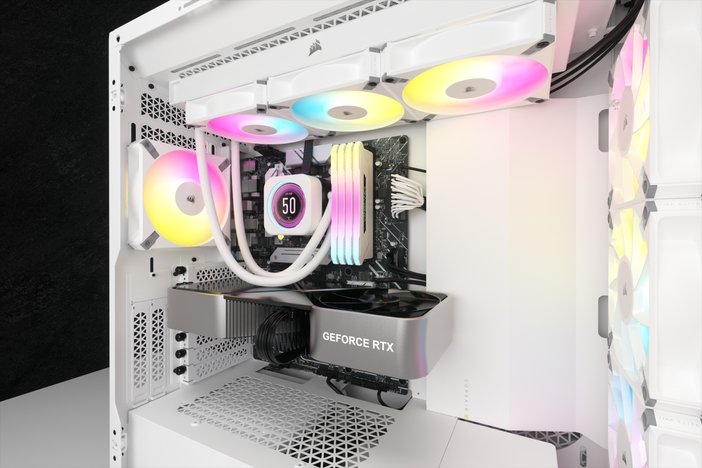Whether it’s developing the medicine we take, choosing the next video to watch, or just checking the weather, AI is finding a way to impact everyday lives. And as computer hardware improves, developing an AI at home becomes more accessible to small developers and enthusiasts. Today we are going to go over some of the hardware considerations you will want to think about before building a PC for AI development.
It isn’t a secret that when developing AI, bigger is better. The largest companies in the world spend millions of dollars buying the best equipment to develop AI. And while it is possible to leverage some of that power for yourself, building your own system could help optimize your workflow and save your money in the long run.
Keep in mind that the broad application of AI and machine learning also means that there is no one-size-fits-all solution so be sure to take into consideration the size and types of data you expect to be working with. We intend this guide to only be the starting point as you consider the different factors that might impact your AI development needs.

To start with a strong foundation, it is important to be using a powerful CPU with high core counts, hyperthreading, and fast speeds that can quickly move around the large amounts of data you’ll be inputting. On top of that, consider the CPU intensive processes that are a part of your development workflow. Things like physics simulations and pre-processing that may just be a part of your normal workload can add significant strain when applied at a large scale.
Beyond the typical CPU workload, you want to make sure it can support the rest of your system. While this isn’t a normal concern for your average gamer, you might want to push beyond normal needs to power your personal project. Higher end CPUs like Intel’s Xeon line and AMD’s Threadripper series can support 8 or more sticks of RAM while driving up to 4 graphics cards through their extra PCIe lanes. In fact some motherboards can support more than 4 GPUs, but we're getting ahead of ourselves.

NVIDIA is undeniably at the forefront of GPU acceleration in machine learning and AI applications. Their dominance of the market means that on the software side many ML frameworks are specifically optimized for NVIDIA GPUs. This is due in large part to the tensor cores that have been included in all RTX cards since the 20 series. Tensor cores are dedicated chips that specialize in functions used to train neural networks. They have enabled many new functions like mixed precision operations, allowing more control over the tradeoff of speed and depth.
With the growing VRAM requirements, even typical gamers are looking for a little bit extra and the same goes for developers as well. Some of the most popular AI and ML products now revolve around image generation and manipulation. Training these kinds of networks will require a data set of images that will be written into VRAM during training. 12GB is enough to start out with but, as always, consider the type of work you will be doing and adjust accordingly.

RAM follows a similar story to VRAM. It’ll allow your computer to prepare bigger data sets and instructions which will vary wildly depending on the type of work you are doing. It is generally advised to load the entirety of your test data into RAM before working on it so large volumes are always advised. We recommend at least 32GB but with the advent of DDR5, you can now get up to 48GB on a single stick. For example, our CORSAIR VENGEANCE 2x48GB kit would be perfect for this application.

Finally all that data will need to be in long-term storage. The high speeds of NVMe SSDs will be critical to moving large amounts of data into RAM, which is critical if you’re working with more data than your RAM can hold. High end NVMe drives like our MP600 can hold up to 4TB of data but slower SATA drives or HDDs can be used for higher volume long term storage. For the training process, these are not recommended but they may be the only option for extremely large data sets.
As the industry implements more AI dedicated hardware using and creating deep learning software is becoming more and more accessible. We hope that this guide will help you think about some of the considerations you will need to make when building a PC for AI development. Check out CORSAIR.com to find our best products for cooling, RAM, storage, and more for your next build.
PRODUCTS IN ARTICLE